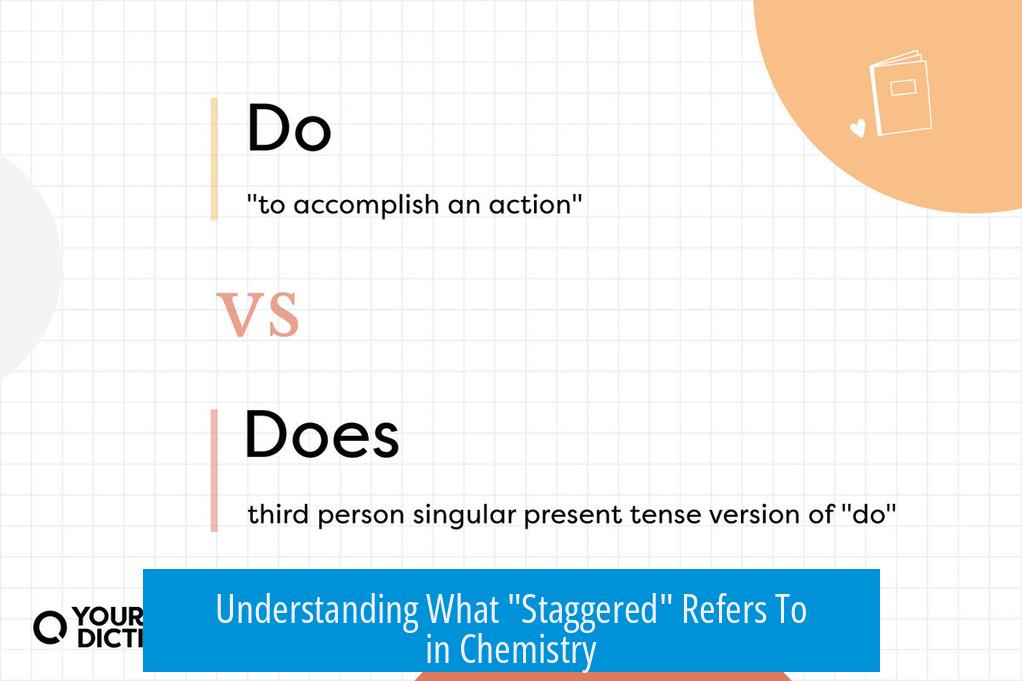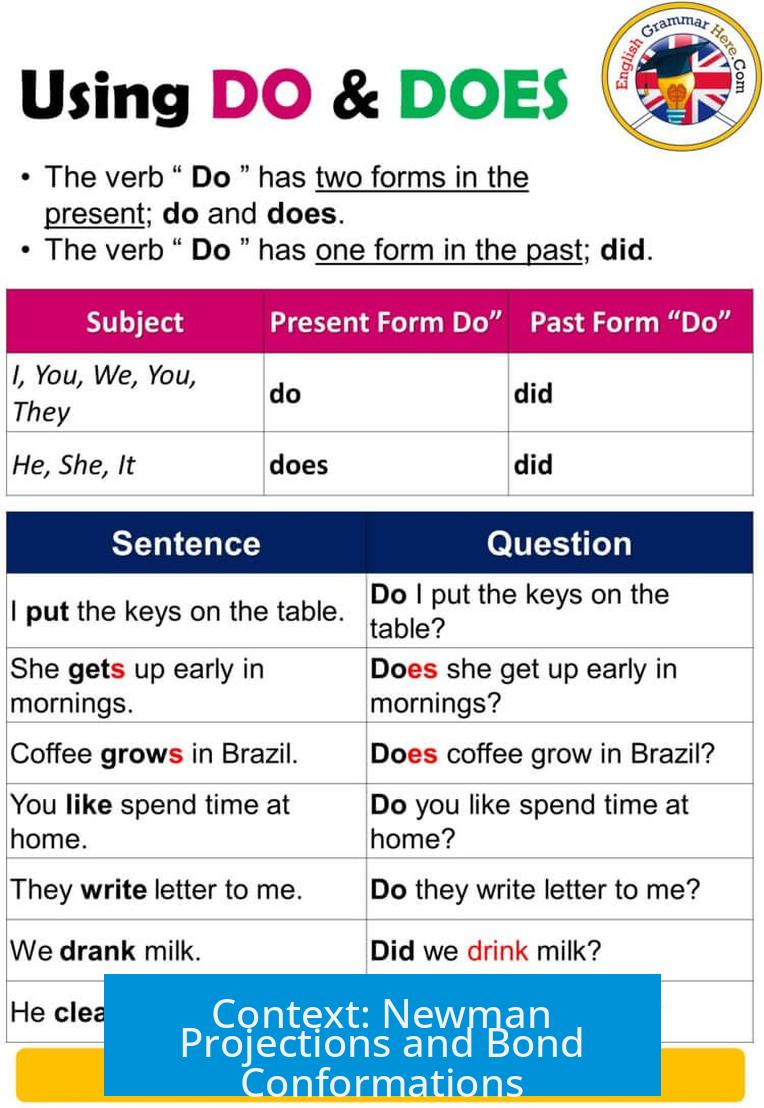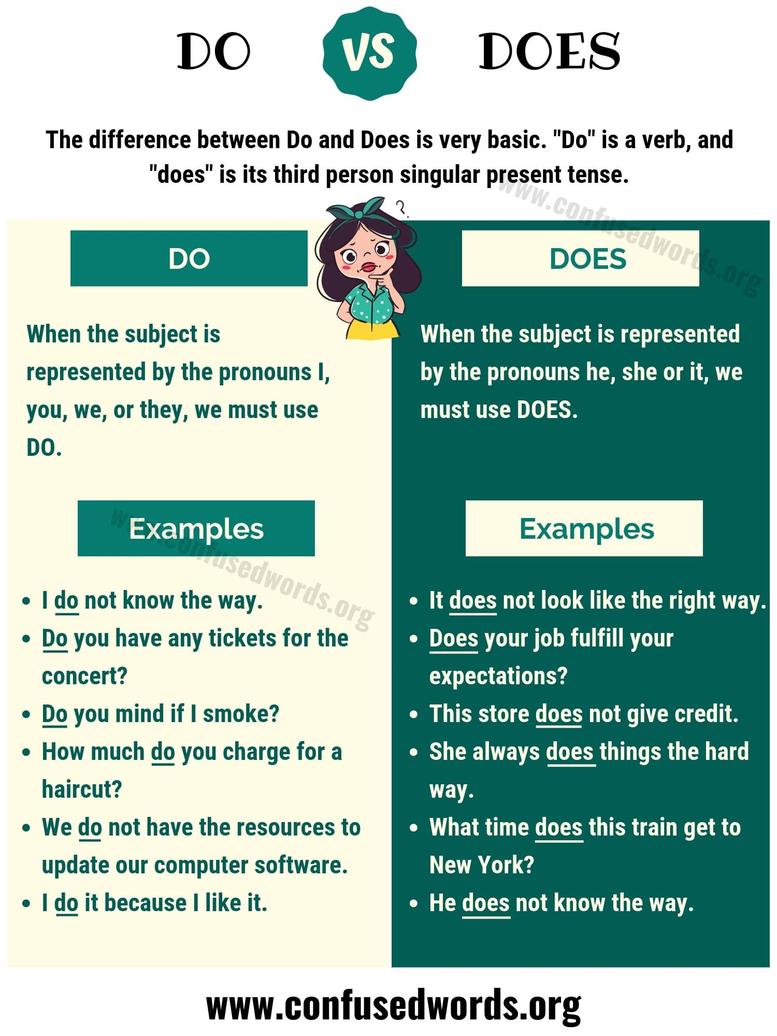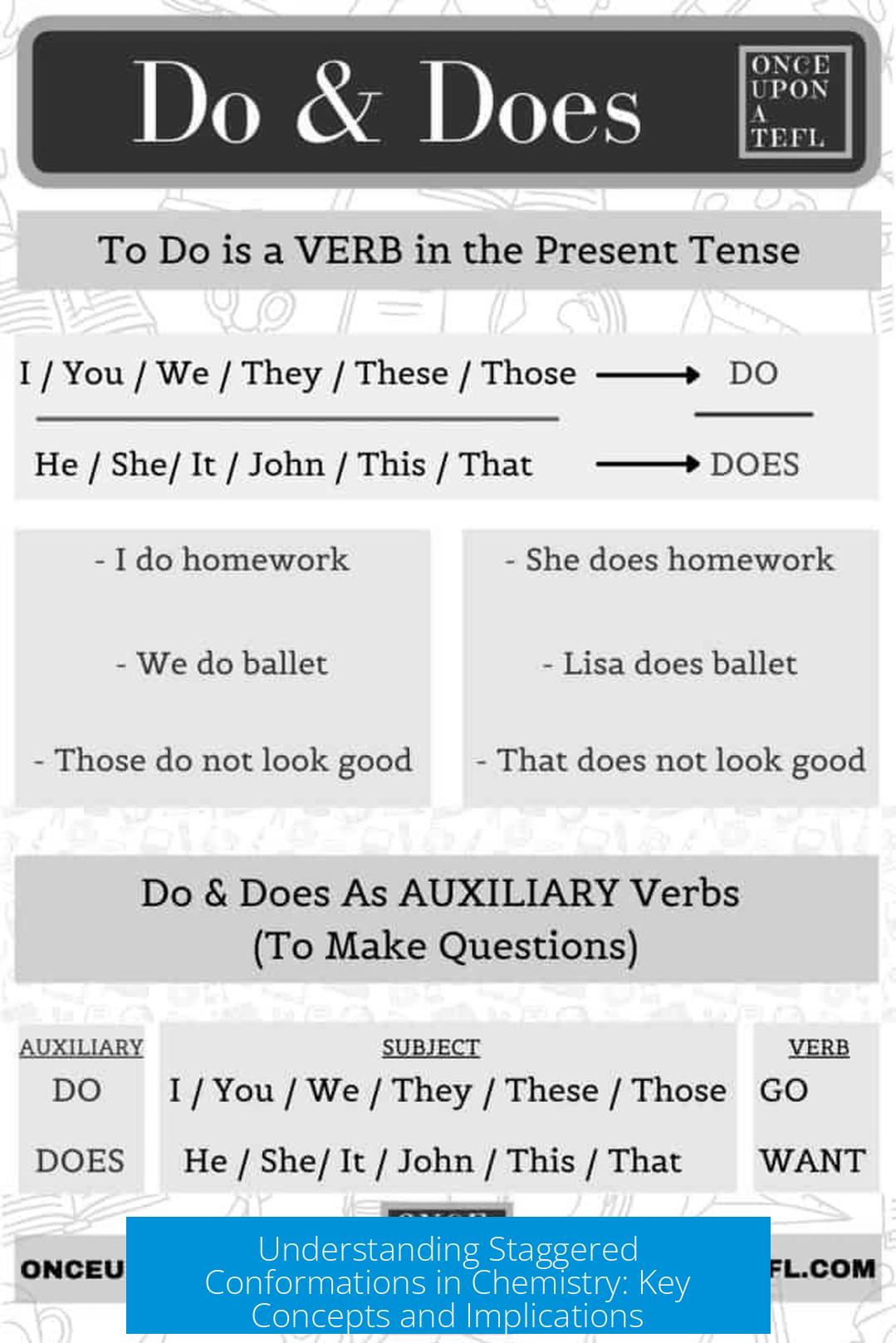Understanding What “Staggered” Refers To in Chemistry

“Staggered” refers to the conformation of a bond, particularly seen in Newman projections, where substituents on adjacent carbons are positioned such that they do not overlap but are spaced as far apart as possible. This spatial arrangement minimizes repulsion between electron clouds and leads to a more stable molecular state.
Context: Newman Projections and Bond Conformations

When examining the bond between two sp3-hybridized carbons, the molecule can adopt two basic conformations: staggered or eclipsed.
Looking down the bond axis (a viewpoint used in Newman projections), staggered conformation places substituents on one carbon offset from those on the adjacent carbon. This contrasts with the eclipsed conformation, where substituents align directly behind one another.

Substituent Positioning in the Staggered State
- Substituents in the staggered state are arranged to maximize their angular separation.
- They can manifest as either gauche interactions, where substituents are 60° apart, or anti interactions, where substituents are 180° apart.
- The staggered conformation reduces torsional strain, stabilizing the molecule relative to the eclipsed form.
Comparison to the Eclipsed State

The eclipsed conformation is characterized by substituents directly overlapping when viewed down the bond, leading to increased electron repulsion.
This overlap results in a higher energy state, decreasing stability. For example, in an eclipsed position, a substituent on the front carbon aligns precisely behind one on the rear carbon.

Clarifying the Terms: Staggered vs. Anti and Gauche
While “staggered” describes the general conformation of the bond, terms like “anti” and “gauche” specify positional relationships between pairs of substituents within that staggered conformation.
| Term | Description | Angular Separation | Energy Level |
|---|---|---|---|
| Staggered | Substituents spaced as far apart as possible | 60° or 180° between substituents | Lower energy |
| Eclipsed | Substituents directly overlap | 0° between substituents | Higher energy |
| Anti | Two substituents opposite each other in staggered | 180° | Most stable |
| Gauche | Two substituents 60° apart in staggered | 60° | Less stable than anti |
Key Takeaways
- Staggered describes a bond conformation with substituents non-overlapping and well spaced.
- This state reduces torsional strain and is more stable than the eclipsed conformation.
- Substituents in staggered conformations can be anti (180° apart) or gauche (60° apart).
- Eclipsed conformations involve direct overlap and increased energy.
- Staggered is an overall conformation; anti and gauche specify substituent relationships within it.
What Does “Staggered” Refer To? Breaking Down the Chemistry of Spacing
Simply put, staggered refers to the way atoms or groups attached to two bonded carbons are arranged in a molecule so they are spaced as far apart as possible rather than overlapping. This spatial arrangement is most often discussed using Newman projections, a special way chemists visualize molecules around a bond.
So, why all this fuss about “staggered”? Imagine two sp3 hybridized carbons connected by a single bond. Each carbon has substituents — atoms or groups attached to it. How these substituents line up relative to each other influences the molecule’s stability and energy level. The “staggered” conformation is like the calm, socially-distanced version of the molecule, where each substituent politely keeps its space.
The Basics: Staggered vs. Eclipsed
When looking down the axis of a bond between two carbons (picture a viewer spying the connection head-on), substituents can be arranged two main ways:
- Staggered: Substituents position themselves to avoid overlapping, maximizing their distance from one another.
- Eclipsed: Substituents directly line up behind each other, overlapping along the bond axis.
Staggered is the chill state—stable and low energy. Meanwhile, eclipsed conformations are the stressed-out state—higher in energy because of electron repulsions.
Spicing Up Chemistry: What Happens In the Staggered State?
Here’s where it gets fun and detailed. Within the staggered conformation, substituents don’t just uniformly space themselves. Some pairs are exactly opposite each other—180° apart—known as anti. Others sit around 60° apart, called gauche.
This means that although the whole structure is staggered, the positioning within that arrangement has its own nuances. Some parts get along quite well (anti), while others are closer (gauche), creating subtle differences in molecule behavior.
Why Does Staggered Matter? The Benefits of Spacing
Choosing to be staggered is good chemistry. It reduces torsional strain, the bumpiness caused by atoms trying to occupy the same space. By spacing substituents far apart, molecules minimize electron repulsions and stabilize the structure.
Put simply, molecules prefer staggered conformations because they’re like a peaceful gathering of friends without anyone standing on each other’s toes. This stability impacts everything from reaction pathways to material properties.
Examples and Practical Implications
- Newman Projections in Action: Organic chemists use these diagrams to depict staggered and eclipsed conformations. Seeing groups spaced out versus lined up directly behind one another instantly clues chemists into stability comparisons.
- Rotating Bonds: Single bonds can rotate freely in many molecules. This rotation switches a molecule between staggered and eclipsed conformations. Staggered positions mark energy minima; eclipsed ones mark maxima.
- Drug Design: The preferred conformation of molecules affects how they bind to targets. Staggered conformations can influence shape, affecting effectiveness and selectivity.
How Anti and Gauche Fit Into This
Think of “staggered” as the big social event. “Anti” and “gauche” are the guest pairs’ positions relative to each other at the party. Specifically:
- Anti: Guests (substituents) stand directly across from each other, 180° apart. This is often the most stable arrangement within staggered conformations.
- Gauche: Guests chat slightly closer at a 60° angle, less spaced but still not overlapped.
You’ll hear chemists say “the molecule adopts a staggered conformation with anti and gauche relationships.” It’s just a way to be precise.
Can You See “Staggered” Outside of Chemistry?
Beyond molecules, “staggered” often means “not lined up” or “offset.” For example, staggered work shifts start and end at different times to avoid overcrowding. In architecture, staggered balconies mean fewer shadows and more privacy. So chemistry borrows a term that’s all about spacing and applies it at a tiny atomic scale.
To Sum It Up
| Term | Definition | Example/Note |
|---|---|---|
| Staggered | Substituents are spaced out along the bond, avoiding overlap. | More stable, lower energy conformation. |
| Eclipsed | Substituents overlap directly behind each other. | Higher energy, less stable. |
| Anti | Two substituents 180° apart in a staggered conformation. | Usually most stable pairwise relationship. |
| Gauche | Two substituents 60° apart in staggered conformation. | Closer than anti but still not overlapping. |
In essence, staggered is the peaceful, spacious state molecules prefer. It’s a term that gives chemists a quick snapshot of molecular geometry and energy. The subtle dance of atoms twisting into staggered forms influences chemistry more than one might expect.
Final Thought: Next Time You Hear “Staggered,” Think Molecular Dance Moves
Whether it’s rotating bonds or people lining up for coffee, being staggered is about smart spacing. It’s about minimizing tension, maximizing stability, and keeping things smooth. So, does your molecule prefer to be staggered or eclipsed? Chemistry says staggered wins the popularity contest every time.
What does “staggered” mean in the context of chemistry?
Staggered refers to a way atoms attach to adjacent carbons so their substituents are spaced out. They do not overlap when viewed along the bond axis, giving a more stable arrangement.
How are substituents arranged in a staggered conformation?
Substituents in staggered conformations are positioned so they are either 60 degrees apart (gauche) or 180 degrees apart (anti) from each other. This spacing reduces repulsion.
How does staggered compare to eclipsed conformations?
In eclipsed conformations, substituents overlap directly, causing more repulsive interactions. Staggered conformations avoid overlap and have lower energy, making them more stable.
Is “staggered” a description of individual groups or the whole bond conformation?
Staggered describes the whole conformation along a bond. Specific relationships like anti or gauche refer to pairs of substituents within the staggered state.
Why is the staggered conformation important?
It represents a lower energy, more stable arrangement of atoms around single bonds compared to eclipsed. This affects molecule shape and reactivity in chemistry.





Leave a Comment